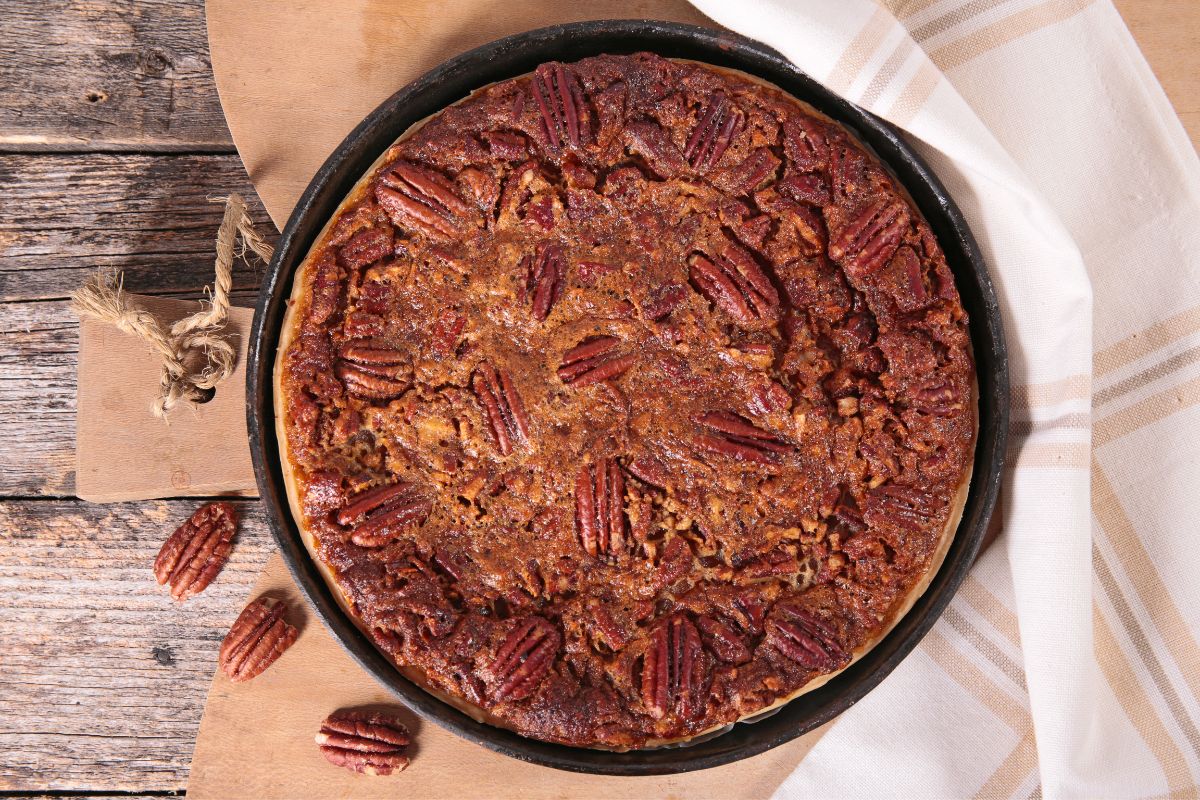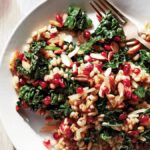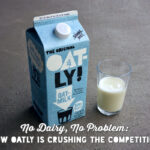Embark on a culinary journey around the globe, discovering a world of delicious dairy-free possibilities! This exploration delves into diverse cuisines, revealing vibrant dishes brimming with flavor and texture, all without relying on dairy products. We’ll uncover the secrets of dairy-free substitutions, master essential cooking techniques, and appreciate the nutritional benefits of a plant-based approach. Prepare to tantalize your taste buds with exciting recipes and a deeper understanding of global culinary traditions.
From creamy coconut curries of Thailand to rich cashew-based sauces of Italy, we’ll navigate a tapestry of flavors, textures, and aromas. We’ll examine the nutritional aspects of dairy-free diets, comparing nutritional profiles and addressing potential drawbacks. Furthermore, we’ll learn how to adapt recipes to accommodate various dietary needs, ensuring everyone can enjoy these delicious, globally-inspired meals. Get ready to expand your culinary horizons and discover a world of dairy-free delights!
Adapting Recipes for Dietary Restrictions

Adapting dairy-free recipes to accommodate additional dietary needs, such as gluten-free, vegan, or nut-free diets, requires careful consideration of ingredient substitutions and potential challenges. Successful adaptation ensures everyone can enjoy delicious and inclusive meals. This section will explore strategies for modifying recipes and provide solutions to common problems encountered during the adaptation process.
Modifying a Dairy-Free Coconut Curry for Various Dietary Needs
Let’s take a delicious dairy-free coconut curry as an example. This recipe, originally designed to be dairy-free, can be easily adapted to be gluten-free, vegan, and nut-free with thoughtful substitutions. The original recipe might include coconut milk, vegetables, spices, and perhaps some gluten-containing thickening agents or nut-based pastes. Adapting this recipe demonstrates the process of accommodating multiple restrictions simultaneously.
Ingredient Substitutions for Dietary Restrictions
The following table illustrates the necessary modifications for each dietary restriction, highlighting the original ingredient, the modified ingredient, and important notes for successful substitution.
| Restriction | Original Ingredient | Modified Ingredient | Notes |
|---|---|---|---|
| Gluten-Free | Soy sauce (often contains gluten) | Tamari or coconut aminos | Tamari and coconut aminos are naturally gluten-free alternatives that provide similar savory flavors. |
| Vegan | Honey | Maple syrup or agave nectar | Honey is an animal product; maple syrup and agave nectar offer comparable sweetness. |
| Nut-Free | Peanut butter (or other nut-based paste) | Sunflower seed butter or tahini | Sunflower seed butter or tahini provide creamy texture and richness without nuts. Tahini adds a distinctive flavor. |
| Gluten-Free & Vegan & Nut-Free | Thickening agent (e.g., flour) | Arrowroot powder or cornstarch | Arrowroot powder or cornstarch provide thickening without gluten, dairy, or nuts. |
Challenges and Solutions in Recipe Adaptation
Adapting recipes can present several challenges. One common issue is finding suitable replacements that maintain the original texture and flavor profile. For instance, replacing a creamy nut butter with sunflower seed butter might result in a slightly different texture and taste. Another challenge is ensuring the modified ingredients don’t introduce unwanted allergens or dietary restrictions. Careful label reading is crucial. Finally, some recipes rely heavily on specific ingredients that are difficult to substitute without significantly altering the final product.
Overcoming Adaptation Challenges
To overcome these challenges, thorough research and experimentation are key. Consulting reliable sources for allergen-free and dietary-specific recipes can offer guidance. Starting with small substitutions and tasting as you go allows for adjustments to maintain desired flavor and texture. Don’t be afraid to experiment with different ratios and combinations of ingredients to achieve the best results. Using a food processor can help create smooth and consistent textures when using alternative ingredients. For example, blending sunflower seeds to create a smooth butter ensures a comparable consistency to nut butters. Accurate measurements are also vital for successful substitutions.
Global Dairy-Free Recipe Inspiration
Embark on a culinary journey around the world, exploring vibrant flavors and diverse ingredients in these five unique dairy-free recipes. Each dish showcases the rich cultural heritage of its origin, highlighting the ingenuity of traditional cooking methods adapted for a dairy-free lifestyle. These recipes demonstrate that delicious and authentic global cuisine can be enjoyed by everyone, regardless of dietary restrictions.
Thai Green Curry with Tofu and Vegetables
Emerald Isle of Flavor: Thai Green Curry
A vibrant and aromatic curry brimming with fresh herbs, tender tofu, and colorful vegetables. This dairy-free adaptation of a Thai classic retains all the depth and complexity of the original.
This recipe celebrates the fresh, vibrant flavors of Thai cuisine. The green curry paste, a cornerstone of Thai cooking, is typically made with a blend of green chilies, lemongrass, galangal, kaffir lime leaves, cilantro, and shrimp paste (omittable for a vegetarian version). The coconut milk provides richness and creaminess, while the tofu offers a hearty protein source. The vegetables, often including bell peppers, bamboo shoots, and eggplant, add texture and sweetness. The dish’s balance of spicy, sour, sweet, and salty notes exemplifies the sophisticated harmony of Thai culinary traditions. This recipe uses vegetable broth instead of fish sauce to maintain a dairy-free and vegetarian option.
Ingredients: 1 block firm tofu, pressed and cubed; 1 tbsp coconut oil; 2 tbsp green curry paste; 1 can (13.5 oz) full-fat coconut milk; 1 cup vegetable broth; 1 red bell pepper, sliced; 1 cup broccoli florets; 1/2 cup bamboo shoots; 1/4 cup chopped cilantro; lime wedges, for serving.
Instructions: Heat coconut oil in a large pan. Add tofu and cook until golden brown. Stir in green curry paste and cook for 1 minute. Add coconut milk and vegetable broth; bring to a simmer. Add bell pepper and broccoli; cook until tender-crisp. Stir in bamboo shoots and cilantro. Serve with lime wedges.
Ethiopian Red Lentil Stew (Misir Wot)
Spiced Heart of Ethiopia: Misir Wot
A hearty and flavorful red lentil stew, a staple in Ethiopian cuisine, bursting with aromatic spices and a rich, satisfying texture. This naturally dairy-free recipe is a celebration of Ethiopian culinary heritage.
Misir Wot is a cornerstone of Ethiopian cuisine, often served with injera, a spongy flatbread made from teff flour. Red lentils, a staple legume in Ethiopia, provide protein and fiber. The berbere spice blend, a complex mix of chilies, ginger, garlic, and other aromatic spices, gives the stew its distinctive vibrant color and fiery flavor. The stew’s earthy and subtly spicy notes reflect the rich culinary landscape of Ethiopia. The preparation involves a slow simmering process, allowing the flavors to meld beautifully.
Ingredients: 1 cup red lentils, rinsed; 2 tbsp berbere spice blend; 1 large onion, chopped; 2 cloves garlic, minced; 1 tbsp ginger, minced; 1 tsp turmeric; 1/2 tsp cumin; 4 cups vegetable broth; salt and pepper to taste; cilantro, for garnish.
Instructions: Sauté onion, garlic, and ginger in a large pot until softened. Add berbere spice blend, turmeric, and cumin; cook for 1 minute. Add lentils and vegetable broth; bring to a boil, then reduce heat and simmer for 20-25 minutes, or until lentils are tender. Season with salt and pepper. Garnish with cilantro.
Indian Coconut Chickpea Curry (Chana Masala)
Golden Spiced Delight: Chana Masala
A fragrant and flavorful chickpea curry, a classic of Indian cuisine, brimming with aromatic spices and creamy coconut milk. This dairy-free adaptation retains the authentic taste of this beloved dish.
Chana Masala, a beloved dish across India, showcases the country’s diverse culinary landscape. Chickpeas, a staple legume in Indian cuisine, are rich in protein and fiber. The curry’s complex flavor profile comes from a blend of spices, including turmeric, cumin, coriander, garam masala, and chili powder. Coconut milk adds a creamy texture and subtle sweetness, enhancing the overall flavor. The dish is often served with rice or naan bread, offering a comforting and satisfying meal. This dairy-free version uses coconut milk instead of yogurt or cream for a richer texture.
Ingredients: 1 tbsp coconut oil; 1 large onion, chopped; 2 cloves garlic, minced; 1 inch ginger, minced; 1 tsp turmeric; 1 tsp cumin; 1 tsp coriander; 1/2 tsp garam masala; 1/2 tsp chili powder; 1 can (15 oz) chickpeas, drained and rinsed; 1 can (13.5 oz) full-fat coconut milk; salt and pepper to taste; cilantro, for garnish.
Instructions: Heat coconut oil in a large pot. Add onion, garlic, and ginger; cook until softened. Add spices and cook for 1 minute. Add chickpeas and coconut milk; bring to a simmer. Cook for 15-20 minutes, or until sauce has thickened. Season with salt and pepper. Garnish with cilantro.
Mexican Black Bean Soup
Sun-Kissed Soul: Mexican Black Bean Soup
A hearty and flavorful black bean soup, a comforting staple of Mexican cuisine, brimming with vibrant spices and fresh herbs. This dairy-free recipe is a celebration of Mexican culinary traditions.
Mexican black bean soup is a comforting and nutritious dish, highlighting the simplicity and bold flavors of Mexican cuisine. Black beans, a staple ingredient in Mexican cooking, are a rich source of protein and fiber. The soup’s flavor is enhanced by the addition of onions, garlic, cumin, oregano, and chili powder. The broth is often enriched with vegetable stock, creating a deeply satisfying base. The addition of fresh cilantro and lime juice adds a vibrant freshness. This recipe offers a straightforward and delicious way to enjoy this classic.
Ingredients: 1 tbsp olive oil; 1 large onion, chopped; 2 cloves garlic, minced; 1 tsp cumin; 1 tsp oregano; 1/2 tsp chili powder; 2 cans (15 oz each) black beans, rinsed and drained; 6 cups vegetable broth; salt and pepper to taste; 1/4 cup chopped cilantro; lime wedges, for serving.
Instructions: Heat olive oil in a large pot. Add onion and garlic; cook until softened. Add cumin, oregano, and chili powder; cook for 1 minute. Add black beans and vegetable broth; bring to a boil, then reduce heat and simmer for 30 minutes. Season with salt and pepper. Stir in cilantro. Serve with lime wedges.
Japanese Vegetable Udon Noodle Soup
Umami Embrace: Japanese Vegetable Udon
A comforting and flavorful udon noodle soup, showcasing the fresh and delicate flavors of Japanese cuisine. This dairy-free adaptation captures the essence of this beloved dish.
Udon noodle soup is a comforting and satisfying staple in Japanese cuisine. Udon noodles, thick wheat flour noodles, provide a hearty base. The broth is often dashi-based (a traditional Japanese stock made from kombu kelp and bonito flakes, but can easily be replaced with vegetable broth for a vegetarian version), offering a delicate and umami-rich flavor. A variety of vegetables, such as mushrooms, spinach, carrots, and daikon radish, are often added for texture and nutritional value. This dairy-free version relies on the natural flavors of the broth and vegetables to create a delicious and satisfying soup.
Ingredients: 8 oz udon noodles; 4 cups vegetable broth; 1 cup shiitake mushrooms, sliced; 1 cup spinach; 1/2 cup shredded carrots; 1/4 cup chopped scallions; soy sauce to taste; sesame oil to taste.
Instructions: Cook udon noodles according to package directions. Heat vegetable broth in a large pot. Add mushrooms and carrots; cook until tender. Add spinach and cook until wilted. Add cooked noodles and season with soy sauce and sesame oil. Garnish with scallions.
This exploration of “Taste the World: Global Dairy-Free Recipes” has unveiled a vibrant and diverse culinary landscape. We’ve journeyed through various cuisines, mastered dairy-free substitutions, and understood the nutritional implications of this dietary approach. More than just a collection of recipes, this journey emphasizes the adaptability and deliciousness of dairy-free cooking, showcasing the rich cultural heritage interwoven within global gastronomy. So, embrace the adventure, experiment with new flavors, and savor the incredible world of dairy-free cuisine!
Essential FAQs
What are the best dairy-free milk alternatives?
Popular options include almond, soy, oat, coconut, and cashew milk, each offering a unique flavor and texture profile.
Can I freeze dairy-free recipes?
Many dairy-free recipes freeze well. However, it’s best to check the specific recipe instructions, as some ingredients may not freeze as effectively as others.
Are all dairy-free recipes automatically vegan?
No. While many dairy-free recipes are vegan, some may contain other animal products like honey or eggs. Always check the ingredient list to ensure it aligns with your dietary needs.
How do I store leftover dairy-free dishes?
Proper storage varies depending on the recipe. Generally, refrigerate leftovers in airtight containers for up to 3-4 days. Always refer to the specific recipe’s storage instructions.


